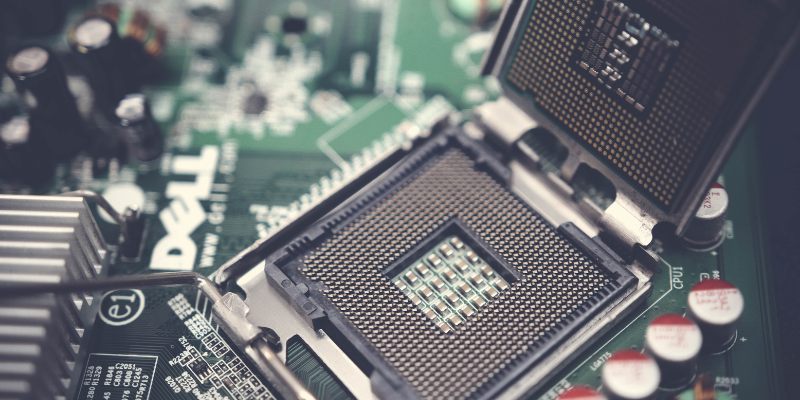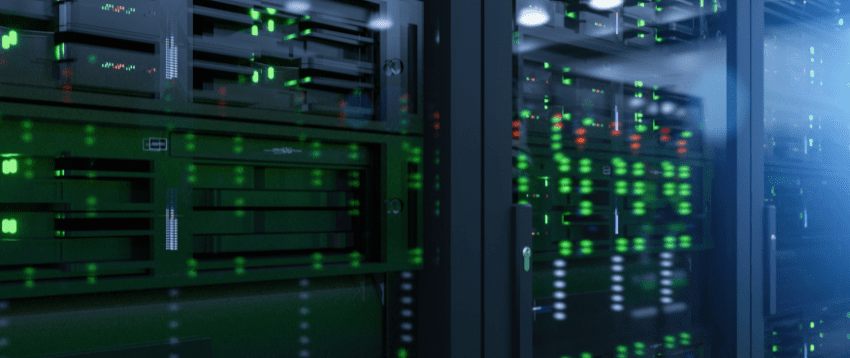Serve customers with the utmost priority and quality with network-attached storage (NAS). It makes business files readily available whenever your workforce needs data.
In today’s hybrid work culture, secure, reliable, and flawless access to data is crucial for business success. Similarly, for students in an educational institute or a group of professionals running a small gig, everyone needs access to data on the network.
Network-attached devices come in handy in such situations. The usage of NAS devices has also increased in the past few years. If you are a business looking to make data access more efficient and convenient or exploring technology career options, this article on NAS is just for you.
What Is a Network-Attached Storage (NAS)?
A network-attached storage device connects directly to a local, wide area, or cloud network. It works as an independent node device on the network with a dedicated IP address. But the device does not come with any input/output (I/O) devices like a keyboard, mouse, monitor, etc., that you may find in other computers.
Though NAS is also a computer with minimal computation resources, the system must cater to inbound data access requests. For example, you will find a CPU, RAM, ATA ports, Ethernet ports, USB ports, etc.
Some modern NAS may come with a tiny LCD screen to show various system statuses like IP address, internet temperature, data transfer rates, etc.
NAS is a crucial business-grade storage media for SMBs, startups, and enterprises that need to minimize their expenditure on individual mass storage devices for workstations.
At any time, tens and thousands of network nodes can access a NAS to get the data they need without slowing down the entire storage network (SSD-based NAS).
Why Is NAS Important for Your Business?
NAS enables businesses to make business data readily available to their workforce from any location. With NAS, an organization does not need to configure hundreds of workstations in a LAN network, allowing each node access to other nodes. It could pose a serious security risk.
Instead, businesses can get a few NAS devices and connect them to Wi-Fi routers using an Ethernet cable. Then, the IT administrator can set up a private cloud network using the NAS-controlling web app of software. Thus, nodes from the intranet and internet (permission devices only) can access data on demand.
Besides the above, other notable importance of network-attached storage are:
- Anyone can operate with a few hours of training; no need to hire a dedicated IT professional.
- It reduces the waste of mass storage device space when you connect all workstations to one massive NAS for all business data storage, archiving, and retrieval purposes.
- Network-attached storages are compatible with various business apps.
- Hardware and software-level data security feature make NAS a secure data storage.
- You can easily create a backup of each drive of a NAS or clone a NAS into another network-attached storage hardware.
Next, we will explore the components and working of NAS.
Components of NAS and Their Working
A typical NAS includes hardware and software components. These are as outlined below:
NAS Hardware
You can call it a NAS head, NAS box, NAS server, or NAS unit. It consists of the following parts:
#1. A Central Processing Unit (CPU)

To manage the file system or compute, a NAS box uses a mid-range CPU (700 MHz to 1.0 GHz clock speed). It manages users, facilitates cloud integration, and writes data to serve and process files.
#2. Chipset
The chipset is the embedded motherboard of a NAS box that contains other computing accessories like RAM, a module to store OS, connectors for network interfaces, and more.
#3. Mass Storage Drives
NAS heads could contain either HDDs or SSDs. There could be two to five storage drive bays. Finally, it uses RAID to arrange multiple physical storages as single or independent logical drives.
#4. Networking Interfaces
NAS boxes contain all types of interfaces to connect to various networks. The most common networking interfaces on a NAS are high-speed Wi-Fi, Ethernet LAN port, USB ports, etc.
A NAS head uses Wi-Fi for cloud configuration. Otherwise, you can use the Ethernet port to connect the NAS to an intranet network.
You can also use the USB ports to connect laptops to configure the NAS, charge accessories, and so on.
#5. Operating Systems
Complex and modern network-attached storage devices come with a small but effective OS. The OS controls all the mass storage drives, the CPU, the RAM chips, the network interfaces, and more.
These OSs come out of the box with a NAS unit and stays embedded within the motherboard. Usually, you do not need to perform any maintenance for such OSs. The NAS manufacturer sets up automatic upgrades via the cloud.
NAS Software
Since there is no keyboard, mouse, or monitor for a NAS box, you need to control it from a node computer connected to the network.
You need to access the NAS app to control the storage server on this node computer. A NAS software is a lightweight web app or standalone software.
NAS File-Sharing Protocols
File-sharing protocols are necessary for networked devices, and NAS devices are not any different. A NAS box comes with data transfer protocols on the web. These are the standard ways of transmitting data between devices via the internet or intranet.
Node devices can access the NAS device through these protocols. The networking protocols of a NAS device are connected to a central server or switch that facilitates optimal data routing.
A NAS depends on the following types of digital data protocols:
Data Communication Protocols
These are mainly IP and TCP. IP or internet protocol helps the NAS to obtain a network address on the business network. It also helps the NAS to pinpoint the network address of the nodes for data transmission.
TCP, or Transmission Control Protocol, converts massive data into tiny data packets. Then, it securely sends the data through the network, ensuring the maximum quality of the data.
File-Sharing Protocols
File format or sharing protocols are crucial for a NAS box’s optimal and flawless performance. The followings are the major file-sharing protocols of standard NAS devices:
#1. Server Message Blocks (SMB)
Mostly Microsoft Windows OS-based devices use the SMB protocol for file-sharing on intranets or the internet. The industry people also call it the Microsoft Windows Network.
Microsoft developed the SMB protocol from Common Internet File Sharing (CIFS). Hence, you could also see references to Microsoft Windows Network as CIFS/SMB protocol.
#2. Apple Filing Protocol (AFP)
This is a proprietary network file transfer protocol from Apple and part of the Apple File Service (AFS). If you want to allow Apple device users within your organization to access data on the NAS, you must use AFP.
#3. Network File Systems (NFS)
This is a frequently used file-sharing protocol for Unix and Linux operating system devices. The protocol is vendor agnostic. Hence, it works for any operating system, network architecture, or device.
Why Do You Need to Choose the Right NAS?
You must choose an appropriate NAS solution for your business needs to save time and money. Other reasons to pick the right NAS solution are:
- Allow data-driven business operations to run continuously without the downtime and frequent maintenance outages.
- Avoid inadequate or wasted storage capacity by choosing a NAS solution by performing internal evaluations for data storage needs.
- After buying, you may find a substandard NAS device unsuitable for certain devices or web apps. Hence, you need to perform rigorous research before picking a NAS box.
- Enjoy the benefits of data resiliency by getting a standard NAS with RAID capability.
- Ensure that the network-attached storage hardware will possess advanced security features like data encryption, role-based access, ad-hoc permissions, etc.
Now, let’s understand the difference between NAS Vs. DAS.
NAS Vs. DAS
If you are puzzled about which one to choose between NAS and DAS, find below a table that clearly distinguishes the two data storage standards:
| Features | Direct-Attached Storage (DAS) | Network-Attached Storage (NAS) |
| Location | On the device or as a physical server | On the cloud or intranet network |
| Maintenance | Managing DAS means managing individual HDDs or SSDs on a server or many workstations | NAS enables you to manage all the business data in one central storage with network access for all nodes |
| Network Connectivity | It may or may not be on the network | Must be on a network for data access |
| Performance | Better than NAS | Optimal but not good for compute-intensive apps |
NAS Vs. SAN
Learn below the distinguishing features between NAS and SAN:
| Features | Network-Attached Storage (NAS) | Storage-Area Network (SAN) |
| Storage sharing | A shared network gives you access to shared storage on a NAS | A dedicated network gives you access to shared storage on a SAN |
| Cost of Ownership | Moderate to affordable | Expensive than a NAS solution |
| Management | Easy to deploy, create user accounts for new nodes, and manage drive bays | Deployment is complicated as well as maintenance |
| Protocols | TCP/IP via Ethernet | Fibre Channel (FC) protocol using optical fiber cables |
Benefits of NAS
NAS has various benefits for business and individual use cases, and these are as below:
- NAS boxes are highly portable. Hence, these are perfect for disaster recovery solutions development.
- NAS helps businesses save capital by consolidating all requirements for mass storage spaces on one centralized device.
- You can easily deploy a NAS box by following the instructions mentioned in its manual.
- IoT software and device manufacturers can use NAS for unstructured data storage and on-site data analytics.
- Small businesses, like digital marketing agencies, social media websites, messaging app providers, etc., can use DAS for data storage and serving needs at a lower cost than storage servers and cloud storage.
- NAS boxes could be faster than conventional data storage solutions if you get SSD-based NAS solutions.
- NAS boxes come with extra empty HDD bays. Hence, businesses can easily scale up their storage quickly and affordably.
Next, we will look into the future of Network-Attched Storage (NAS).
Future of NAS
The total business revenue from NAS hardware and software has been $20 billion in the global market. According to Global Market Insights, the experts believe the market will grow rapidly at a CAGR rate of 15% or more from 2023 to 2032.
Companies that deal with NAS devices and software are coming up with innovative products and services like the ones outlined below. These services and products should help the file-based storage concept or NAS thrive in the future:
- Leading cloud service providers like Amazon, Google, and Microsoft use NAS in their cloud storage architecture.
- There are integration apps and services available for Hyperconverged Infrastructures or HCIs.
- There are software developers who are working on solutions to use NAS as an on-site data analytics device like edge analytics.
Next, we will explore some of the best resources to learn NAS.
Resources
Network Attached Storage A Complete Guide
You can become a functional NAS domain assessor by carefully reading this NAS Complete Guide book.
It is a self-assessment book that answers many questions a NAS user or IT administrator could ask.
Introduction to SAN and NAS Storage
This Introduction to SAN and NAS Storage course helps you to understand the basics and some advanced concepts on network attached storage and storage area networks.

It is a free video tutorial of 3 hours and 35 minutes. Anyone can learn NAS and SAN conveniently by opting for this online course.
You just need to possess basic knowledge of computers with you. In the end, you can complete a quiz to gauge your knowledge of NAS and SAN.
Network Attached Storage (NAS) for Beginners
If you do not know anything about remote and centralized data storage, you must sign up for this Udemy course on Network Attached Storage (NAS) for Beginners. You can learn the theoretical and practical aspects of NAS in this course.

Also, you get to see a real NAS device, how to install it, how to manage it, and more. The device model on which you will get real-world experience is Synology DS218j.
Final Words
So, now you know network-attached storage from the ground up. You’ve also explored some online learning courses and books to acquire more technical knowledge and real-life usage experience on NAS devices.
Give these reading and learning resources a shot as you increase your aptitude and technical know-how on network-attached storage devices.
You may also be interested in the best network-attached storage solutions for business and individual use.
Si quiere puede hacernos una donación por el trabajo que hacemos, lo apreciaremos mucho.
Direcciones de Billetera:
- BTC: 14xsuQRtT3Abek4zgDWZxJXs9VRdwxyPUS
- USDT: TQmV9FyrcpeaZMro3M1yeEHnNjv7xKZDNe
- BNB: 0x2fdb9034507b6d505d351a6f59d877040d0edb0f
- DOGE: D5SZesmFQGYVkE5trYYLF8hNPBgXgYcmrx
También puede seguirnos en nuestras Redes sociales para mantenerse al tanto de los últimos post de la web:
- Telegram
Disclaimer: En Cryptoshitcompra.com no nos hacemos responsables de ninguna inversión de ningún visitante, nosotros simplemente damos información sobre Tokens, juegos NFT y criptomonedas, no recomendamos inversiones




